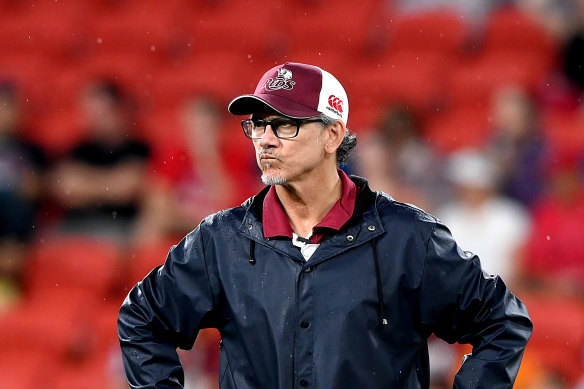
“Yes, we’ll lose a few of the older players, and they may choose to go to Europe or choose a different direction, but I think what we’ve got now is a pretty robust pathway connected to the Super.”
While Australia’s prominent rugby schools have a proud history producing Test talent, a recent narrative has been of players being lured from those systems to rugby league.
Kalyn Ponga went from being an Anglican Church Grammar star to Dally M Medal winner, Pat Carrigan emerged from St Joseph’s College, Gregory Terrace to become a State of Origin hero, while south of the border Cameron Murray and Angus Crichton both left the 15-man game.
Horne, however, said there was no panic, declaring rugby had been successful in retaining the bulk of its talent.
Reportedly, just three of the 26-man under-18s Australia squad who defeated New Zealand in October are headed for rugby league, headlined by Wests Tigers recruit Heamasi Makasini.
“A lot of people are talking about whether he is a league kid or a rugby kid, and we want to invest in those players who are actually committed to rugby and give them an opportunity.”
Peter Horne
“We’re pretty active in securing and retaining those players,” Horne said.
“We’ve made a big push pivoting a bit into under-14s and having a connection at under-14s and 15s, and those players in our system from 14 through to just over 20, we’ve been able to retain a significant proportion.
“The ones we want to keep we do. Our proposition is around quality of program, opportunity of international touring, whether it’s at a 20s or under-18s level, and we’ve got competition in Super Rugby under-16s and under-19s.
“There’s always going to be players who leave, and there are players who will go to the opposite code, but there are also players in the opposite code who want to come to us.
“The key for us is to continue to deliver high-quality programs, so those kids know they’ve got an opportunity to go into Super and higher honours.”

Reds coach Les Kiss has implemented an international program for his squad.Credit: Getty
Development pathways have culminated in success for the Queensland Reds, who qualified for the under-16s and under-19s Super Rugby grand finals at Ballymore on Sunday.
But keeping that talent will rely on ensuring they remain engaged throughout the year, and Horne confirmed plans for a second-tier competition were being discussed.
The Super Rugby Pacific campaign runs from February to June before international fixtures take over, leaving those not chosen for higher honours to play in local premier grade.
Some clubs have sought to fill that gap – with the Reds arranging tours to Tonga, Japan and England after hosting a clash against Wales, while the Western Force travelled to South Africa.
Loading
Horne said discussions were in overdrive on how to extend the season into November, and a competition similar to the former National Rugby Championship was on the radar.
“There are quite a lot of discussions in the background about what do we do in this space, and how do we extend the year,” Horne said.
“Having been overseas for nearly two decades, and then coming back and seeing the value of the NRC and then not, it’s a really important step.
“What we want to do is fill the void with a meaningful competition that provides opportunity for those players who don’t get enough minutes out of Super Rugby, but also those who are connected from our academies ... and domestic clubland, and get a step-up and play in a better comp.”









 Add Category
Add Category